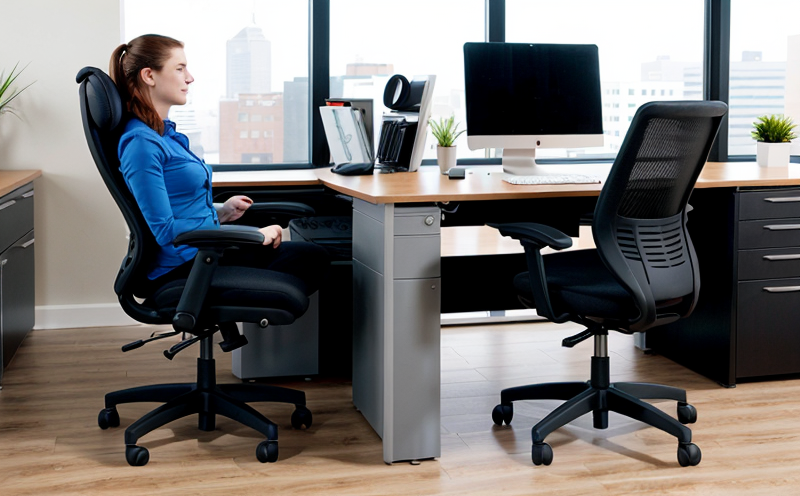JIS L 1096 Upholstery Fabrics Durability Testing for Office Furniture
The JIS L 1096 test evaluates the durability of upholstery fabrics used in office furniture. This critical assessment ensures that materials can withstand the demanding conditions found in commercial environments, where they are subjected to prolonged use and occasional abuse.
Office furniture is designed to provide comfort and support for extended periods while withstanding various stresses such as daily handling, accidental spills, and heavy loads. The JIS L 1096 test simulates these real-world conditions through a series of mechanical and chemical tests that assess the fabric's resistance to wear, tear, and other forms of degradation.
The test is particularly relevant for businesses focused on sustainability, as it helps manufacturers ensure longevity and reduce waste. By passing JIS L 1096 testing, furniture manufacturers can demonstrate their commitment to producing high-quality products that meet or exceed industry standards.
For quality managers and compliance officers, this test ensures that the upholstery fabrics in office furniture meet the necessary performance criteria as defined by Japan's industrial standards. This is crucial for maintaining a competitive edge in the global market and ensuring customer satisfaction.
Why It Matters
The durability of upholstery fabrics used in office furniture can significantly impact both the comfort and longevity of the furniture. Comfort is paramount for employees spending long hours at their desks, while the longevity ensures that the furniture remains functional and aesthetically pleasing over time.
Compliance with JIS L 1096 standards not only enhances the reputation of a company but also builds trust among clients and stakeholders. It demonstrates a commitment to quality and sustainability, which are increasingly important factors in today's market. By adhering to these standards, manufacturers can ensure that their products meet or exceed customer expectations.
Moreover, durability testing helps identify any weaknesses in the fabric design or manufacturing process early on. This allows for corrective actions to be taken before large-scale production and potential financial losses occur. It also contributes to reducing waste by ensuring that only robust materials are used, thereby extending the life cycle of each product.
For R&D engineers and procurement teams, understanding JIS L 1096 testing is essential for innovation. By staying informed about these standards, they can develop new fabrics or modify existing ones to better withstand various environmental factors while maintaining a high level of comfort. This knowledge also aids in selecting the right suppliers who adhere strictly to such stringent quality controls.
Applied Standards
| Standard | Description |
|---|---|
| JIS L 1096 | This Japanese Industrial Standard specifies the methods for determining the resistance to abrasion of upholstery fabrics used in office furniture. |
| ISO 12947-3 | An international standard that provides guidance on how to perform tests related to colorfastness properties of textile materials, which is relevant for ensuring the longevity and appearance retention of upholstery fabrics. |
The JIS L 1096 test focuses specifically on abrasion resistance, one of the most critical aspects of fabric durability. It involves rubbing a sample against an abrasive surface under controlled conditions to measure how much weight it can withstand before showing signs of wear.
Additionally, ISO 12947-3 complements JIS L 1096 by addressing colorfastness concerns, ensuring that even after extensive use, the fabric remains vibrant and does not bleed or fade. This dual approach ensures both functional integrity and aesthetic appeal of office furniture upholstery.
Competitive Advantage and Market Impact
- Meeting JIS L 1096 standards enhances a company's reputation as a leader in quality and sustainability.
- This certification can serve as a selling point for potential clients looking to purchase durable, high-quality office furniture.
- By adhering strictly to these standards, manufacturers can anticipate customer needs better than competitors who may not follow such rigorous protocols.
The competitive advantage derived from JIS L 1096 testing lies in the ability to produce robust products that last longer and maintain their appearance over time. This translates into reduced maintenance costs for end-users, increased product lifecycle, and enhanced brand loyalty due to consistent performance across all items produced.
In terms of market impact, compliance with JIS L 1096 ensures that the furniture meets or exceeds expectations set by industry leaders globally. It allows businesses operating internationally to meet local regulations without additional effort, thus broadening their customer base and expanding into new markets more easily.





